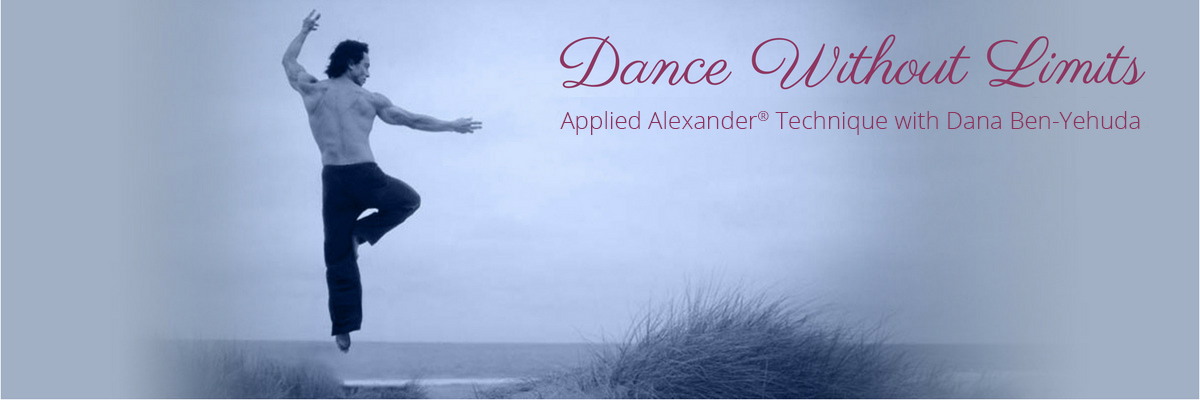Is Unrecognized Tension Sabotaging Your Dancing?
Is Unrecognized Tension Sabotaging Your Dancing?
Part 1
She lay on the table during the semi-supine portion of the lesson, and she let out a big sigh. I could see her relax, as if she was at the beach, on vacation. Her body eased, her neck released with a particular look; I could see the tone of her neck and skin changing. I mentioned this is like going on vacation, when you lay on the beach and allow the sun to soak in. The air drifts by and it smells like salty ocean and flowers from the trees. Your muscles melt and it feels like Nirvana.
Have you ever had that experience of going on vacation and realizing that you are relaxing from tension you didn’t even realize you were carrying?
What if you’re doing that in your dancing? What if you’re carrying around tension you don’t even feel because it’s always there?
How would that affect your movement?
It is the tension we don’t recognize that is the hardest to deal with and
It happens to all of us.
Tension is like refrigerator noise; a certain level becomes invisible because it’s always there.
It still interferes with movement, but what can you do about tension you don’t even feel?
You may not feel it but people around you, judges and coaches, see it.
Watching a tense dancer doesn’t feel as good either. It feels better watching someone with flow. Unconsciously we pick up on other people’s tension even if we’re not defining it to ourselves in that way.
We must bring movement to conscious awareness in order to change the pattern. It doesn’t have to be complicated. Any simple movement will serve to uncover tension patterns.
Today working with a student offers a simple example: standing up out of a chair. We all do it many times a day and it’s often unconscious, like answering the phone; we do it without thinking.
Today we focused on the details of the process; the how-to of movement that’s the key to moving better.
As my student prepared to stand up, what I observed is a stiffening of her neck and spine. Her whole back tensed up in an effort to stand.
Logically it doesn’t make sense; all that’s needed to stand up is put your feet on the ground and let your legs straighten. It’s not only unnecessary it’s unhelpful, asking your back to do your legs’ job.
What if this pattern continues on the dance floor? What if unrecognized tension in your neck and back is taking over some of what your legs should be doing?
If your neuromuscular system has a habit of automatically tightening up when you begin to get out of a chair, it will also stiffen right at the critical moment when you initiate movement in dance, causing you to look stiff and awkward. It is tightness that doesn’t let you move freely.
After all, if you can’t be conscious of your head and spine in such a simple thing as standing up, then how can you have an open, beautiful line in dynamic movement in dance?
It’s the same tension that will affect you, coming up to toes in a box step.
If your neck stiffens it is more difficult to move and be balanced on your feet.
This tension is not a pattern that you or anyone is doing consciously. It is an old, ingrained habit that many, many people have and it began when we were little children, sitting in chairs at school. Too many hours sitting, and children begin to slump, or they straighten up trying to please their teacher but stiffen their backs and necks. Either way, the body is being trained and unconsciously, learns to use tension as a habit.
Here’s a happier way to look at it:
How little tension can you have and still have beautiful form and move cleanly?
How can we transform tension into beautiful lines and movement that feels good?
These are the questions I ask myself in dance. We all have unconscious patterns and improving is a never-ending process. Having the tools to do so – ah – priceless.
The lesson was drawing to conclusion and she commented this is like “getting to know your anatomy on the inside.”
As we worked today, my student started recognizing a certain feeling of…nothingness…an effortless, subtle sensation, like “falling upward” as her legs folded under her and she came to a sitting position. She was vertical as her legs bent and straightened yet she was not holding tension in her neck and back.
She started connecting this ease in motion with a freedom point where her legs and body connect. Today was a breakthrough; something clicked and she was able to replicate this on her own.
That’s what this work is all about; a growing awareness of your anatomy on the inside and using that to retrain movement patterns. It’s about learning to control the degree of release and directing your energy in activity so movement becomes effortless.
We need freedom and control, both, and to fine-tune that balance.
More coming….stay tuned for Part 2!
Namaste,
Dana
P.S. I hope you’ll consider joining my blog. There’s a gift for you: Seven Tips for Lightness and Ease. Get updates, tips, and grab that gift! It comes in the Welcome letter when you join.
Check out my new website about Dance and the Alexander Technique!

I love this phrase “getting to know your anatomy from the inside”. I think all the advice here is relevant not just to dance, but to any activity.
HI Robin,
Thanks so much for your comment. I also experience “getting to know your anatomy from the inside” is exactly how I experience the AT awareness, as well. I agree; this is applicable to all life activities. My first dance teacher told me, “dance is advanced walking.” I teach this to all my students, dancers and “walkers,” too.